Standing desks have become increasingly popular in recent years as more and more people have realized the benefits of reducing the amount of time spent sitting. However, standing for extended periods can cause discomfort and pain, particularly in the lower back, feet, and legs. Fortunately, there are several ways to alleviate this pain and improve your overall experience while using a standing desk.
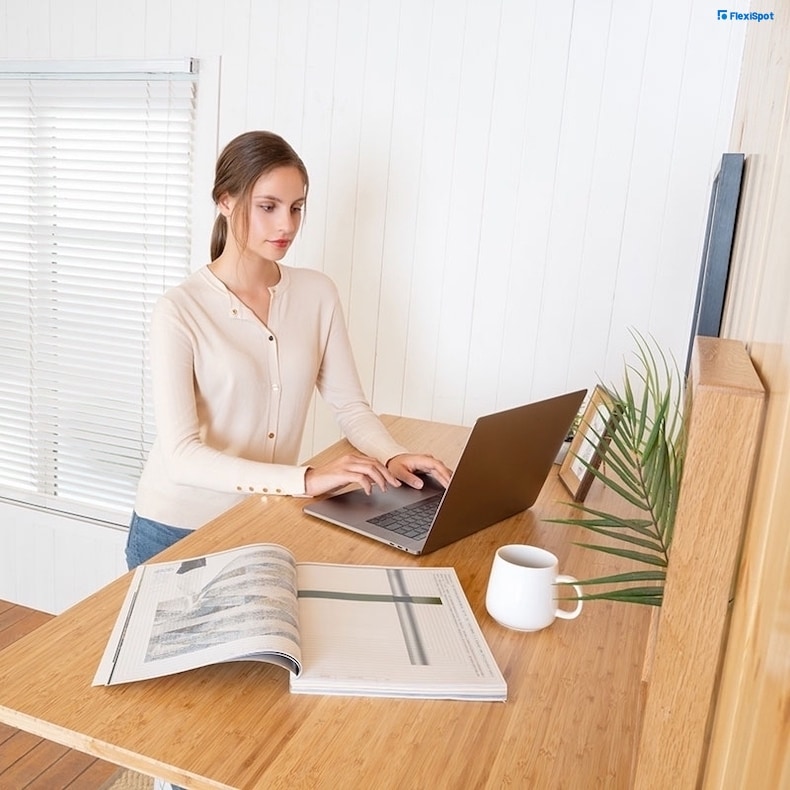
Adjust the desk height
The first and most crucial step to relieving pain while using a standing desk is to ensure that the desk is at the correct height. A desk that is too low can cause strain on the back and shoulders, while a desk that is too high can cause strain on the neck and arms. Ideally, the desk should be at elbow height, with the arms bent at a 90-degree angle when typing. This position will help maintain proper posture and reduce stress on the body.
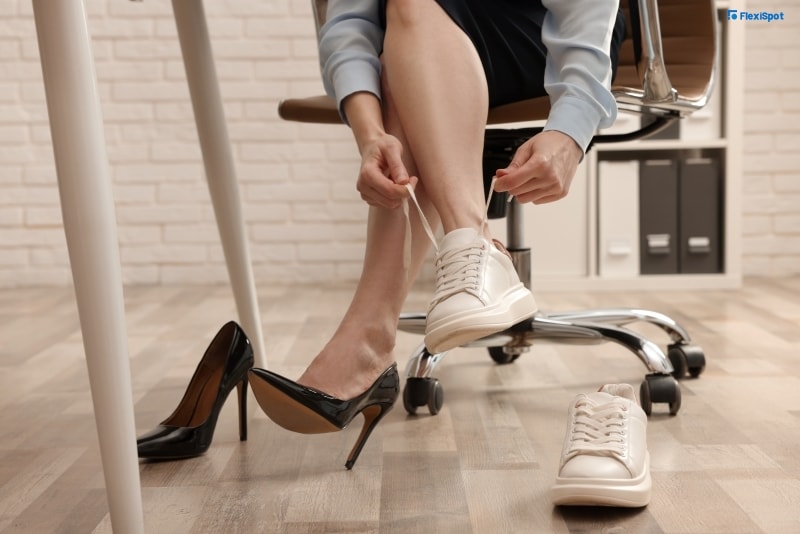
Wear comfortable shoes
Wearing comfortable shoes is essential when using a standing desk. Shoes with good arch support can help prevent foot pain and reduce strain on the legs and lower back. Avoid wearing high heels or shoes with a narrow toe box as they can lead to foot pain and cause imbalances in the body's alignment. Consider investing in a pair of supportive and comfortable shoes specifically for use with a standing desk.

Take breaks and move around
Standing in one position for an extended period can cause muscle fatigue and pain. Taking regular breaks to move around and stretch can help alleviate discomfort and increase circulation. Set a timer or use an app to remind yourself to take breaks every 30 minutes or so. During breaks, walk around, stretch your legs and back, and do some light exercises to keep your body active and energized.
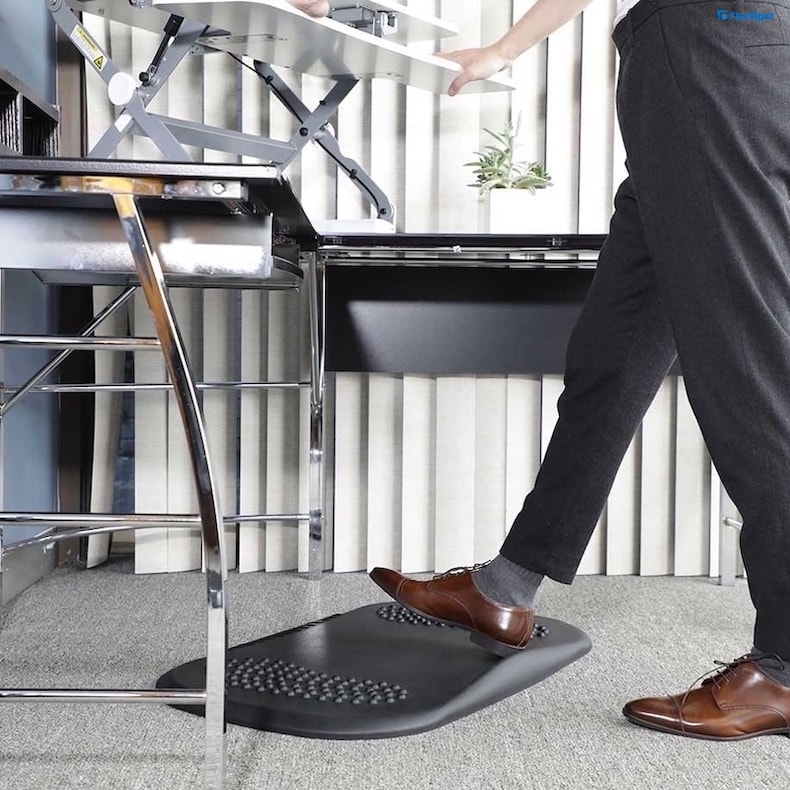
Use an anti-fatigue mat
Standing on a hard surface for an extended period can cause foot pain and leg fatigue. Using an anti-fatigue mat can help reduce these symptoms by providing cushioning and support to the feet and legs. These mats are designed to reduce the pressure on the feet and promote better circulation. Place the mat in front of the standing desk, and stand on it while working to improve comfort and reduce pain.
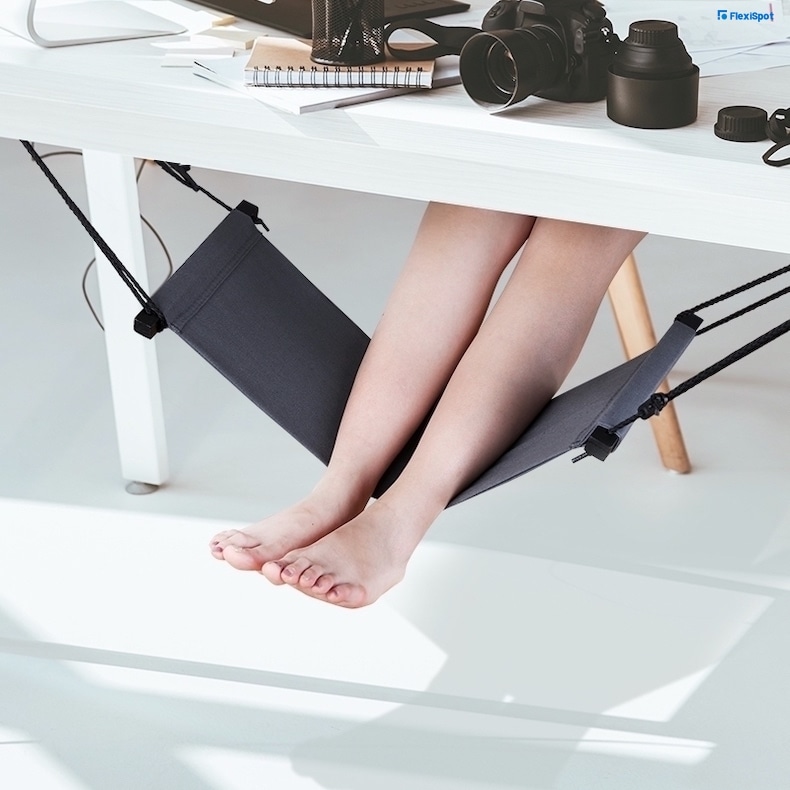
Consider a footrest
Using a footrest can help reduce strain on the lower back and legs while using a standing desk. A footrest can help shift weight from one leg to the other, promote better circulation, and reduce pressure on the feet. When using a footrest, ensure that your feet are flat on the surface and that your knees are bent at a 90-degree angle.
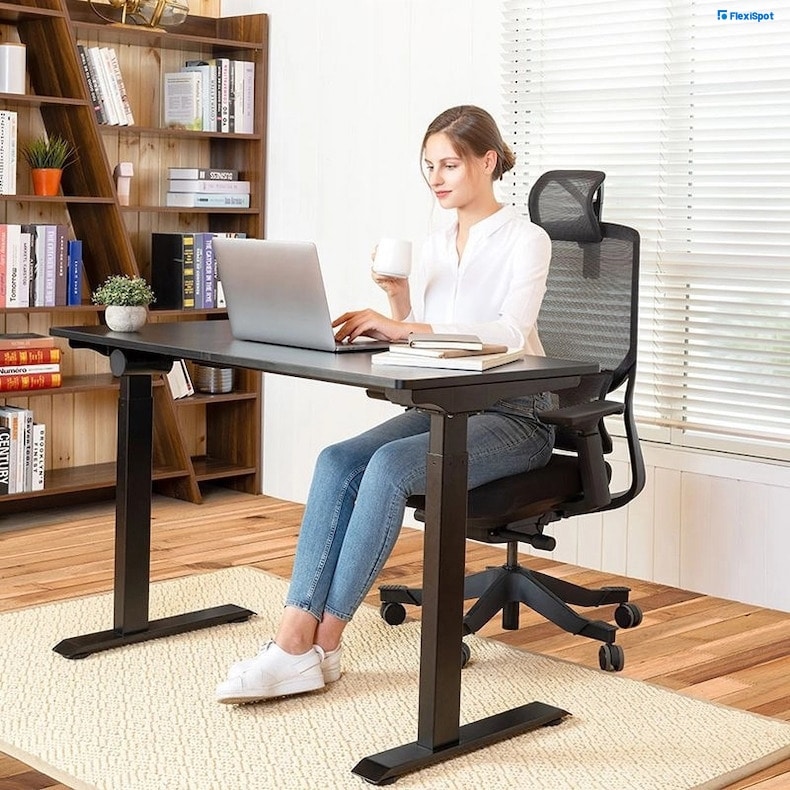
Maintain good posture
Maintaining good posture is critical when using a standing desk. Improper posture can lead to pain and discomfort in the neck, shoulders, back, and legs. Ensure that your head is in a neutral position, and your shoulders are relaxed. Keep your feet shoulder-width apart, and distribute your weight evenly between both feet. Stand up straight, and avoid slouching or leaning forward.
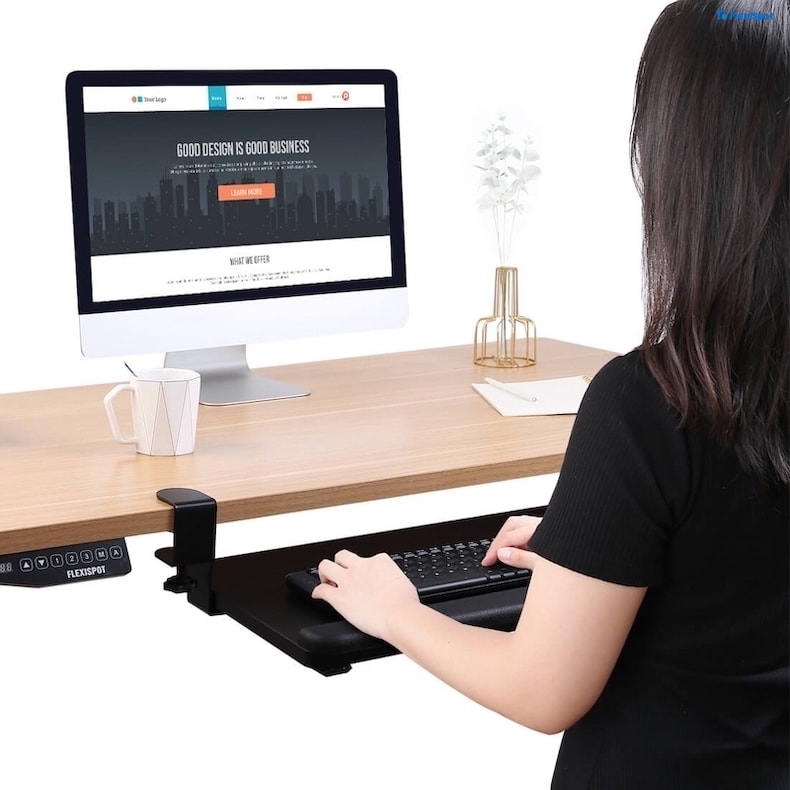
Use ergonomic accessories
Ergonomic accessories can help reduce pain and discomfort while using a standing desk. A keyboard tray can help maintain proper wrist position and reduce strain on the arms and shoulders. An ergonomic mouse can reduce strain on the hand and wrist. A monitor stand can help position the screen at eye level, reducing strain on the neck and shoulders.
Recommended standing desk:
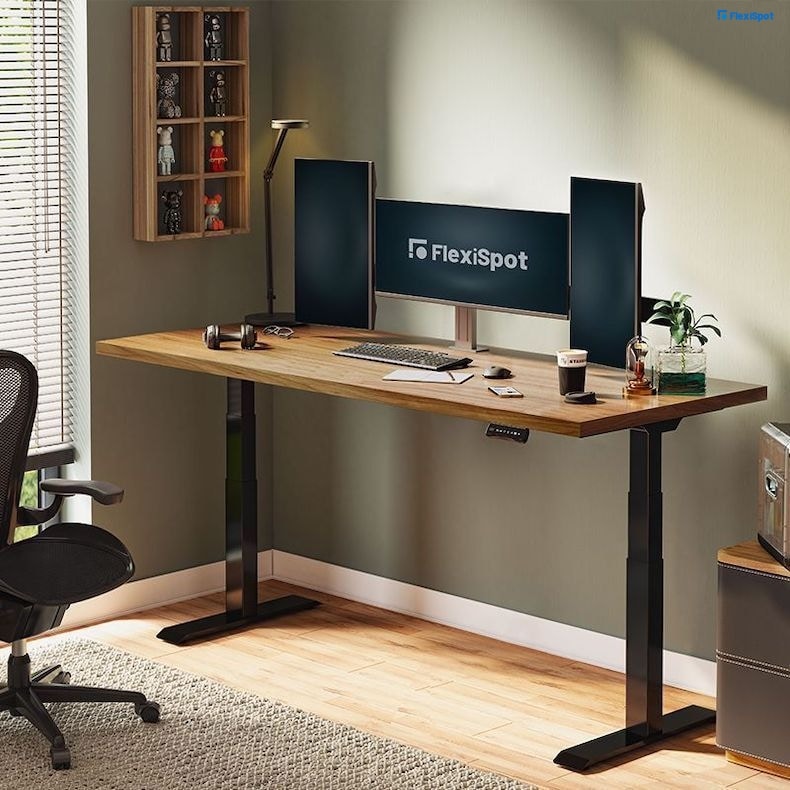
Pro Plus Standing Desk (E7)
BIFMA-certified, this product is extremely stable and has a reliable weight capacity of 355 pounds. Its leg columns are thicker than usual while the column gap is scientifically designed to be 0.05 mm, ensuring a smooth lifting operation. The base structure is made of solid carbon steel, reaching an automotive-material grade. It is guaranteed durable, passing 20k motion tests. And plus, you are entitled to a 15-year warranty upon purchase.
Customers also love its sleek appearance with a laser-welding technique used for its frame. It features an aesthetically pleasing holeless leg design and uses a Nordson Enviro Coat powder spraying system that’s sustainable and eco-friendly. It is temperature-resistant and has an anti-wear coating which makes sure the color stays consistent for a long period of time.
Its adjustable height range is from 22.8” to 48.4”, providing a user-friendly experience for people that stand 4’2” to 6’4”.
It comes with an embedded cable tray that is conveniently hidden under the desktop. It makes use of a premium keypad with USB charging port, two programmable height presets, and a sit-stand reminder.
Final Word
In conclusion, using a standing desk can help improve overall health and reduce the negative effects of prolonged sitting. However, standing for extended periods can cause pain and discomfort, particularly in the lower back, feet, and legs. By following the tips above, you can help alleviate pain while using a standing desk and improve your overall experience. Remember to adjust the desk height, wear comfortable shoes, take breaks and move around, use an anti-fatigue mat, consider a footrest, maintain good posture, and use ergonomic accessories. By implementing these measures, you can reduce the strain on your body and prevent pain and discomfort while using a standing desk.
It is essential to note that standing desks are not a one-size-fits-all solution. Each individual's body is different, and what works for one person may not work for another. Therefore, it is crucial to listen to your body and adjust your standing desk setup accordingly.
If you experience pain or discomfort while using a standing desk, consider consulting with a healthcare professional, such as a physical therapist or chiropractor. They can provide personalized recommendations and exercises to help alleviate pain and improve your overall health.
In summary, standing desks are an excellent way to reduce the negative effects of prolonged sitting and improve overall health. However, standing for extended periods can cause pain and discomfort. By adjusting the desk height, wearing comfortable shoes, taking breaks and moving around, using an anti-fatigue mat, considering a footrest, maintaining good posture, and using ergonomic accessories, you can alleviate pain while using a standing desk and improve your overall experience. Remember to listen to your body and adjust your setup as needed to ensure a comfortable and productive work experience.
